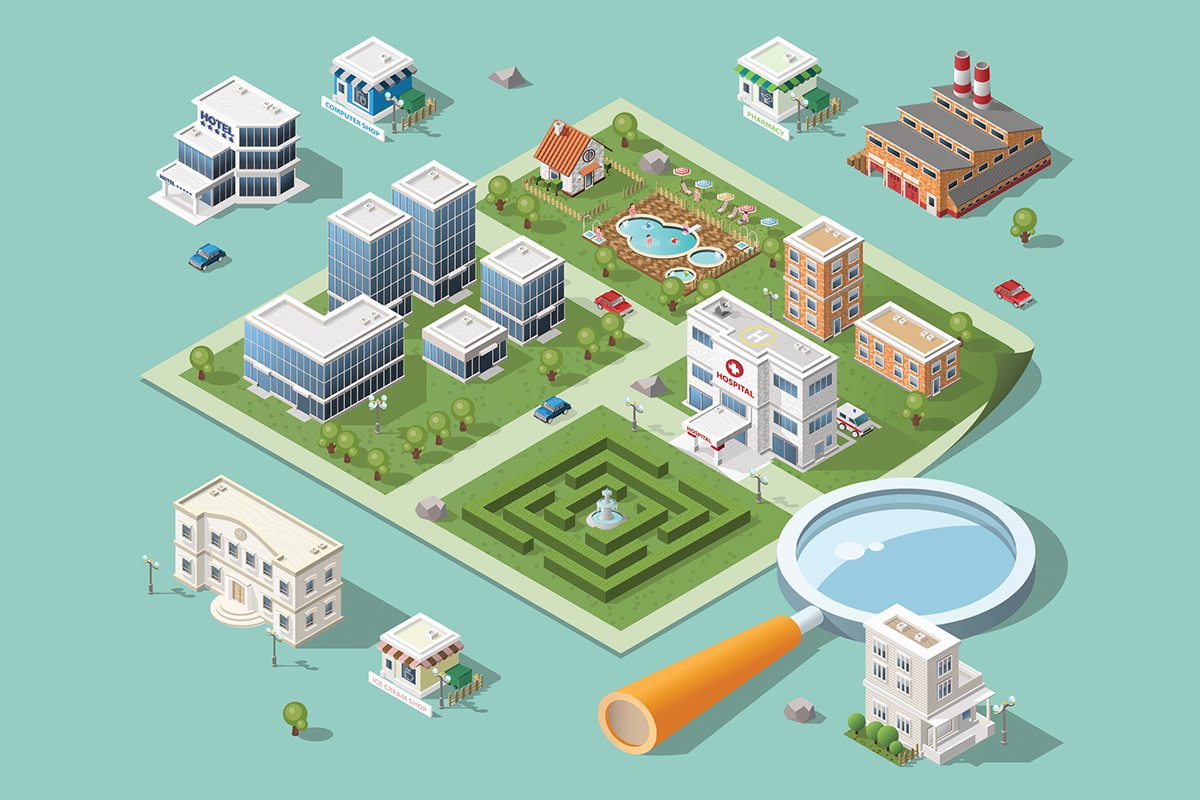Diploma Programme (DP) graduate Tammy Gaibrois writes to us from her home in the United States and shares the issues that matter to her and her career as an urban planner. This is her second story in the graduate voices series.
This essay is based on the research and opinions of the author and does not necessarily reflect the views of the International Baccalaureate. The IB believes in the free exchange of opinions and that a productive and robust dialogue is healthy for our society and essential to building a better world.

Each autumn, I look forward to the brisk fall air, students returning to school, football games, and the festive back-to-back holiday events. However, the year 2020 has unraveled itself unexpectedly. The brisk fall air turned into smoky haze from wildfires across the west coast of the United States (U.S.). Schools continued to remain online in makeshift classrooms at home, football has turned into a political pawn and holiday gatherings are reduced to video calls to keep long distance family and friends healthy. This year’s victories have been foiled by the one million COVID-19 (Coronavirus) deaths world-wide, economic recession leading to high evictions, severe climate change effects and political turmoil.
It is easy to blame the year 2020 but with hindsight being 20/20, these problems have been present for decades. Climate change has been an international problem for 30 years. The Internet is now used for essential remote education and work but since its inception for commercial use in 1991, it is still inaccessible to under-privileged groups and in rural geographical areas that lack proper infrastructure. And in the midst of an economic recession fueled by record breaking layoffs and evictions, affordable housing continues to be in demand for those truly in need.
A lot of these issues can be greatly mitigated through urban affairs and public policy, which has been largely over-looked by the public because of its complexity and mundane topics that are seen on the surface. But as we collectively become more political, we need to include urban politics in our voting agenda. Yes, we do have a vote in the way our cities develop and public engagement is key. Here is a guide highlighting the top three issues on my radar currently and what you can do to help:
Climate change
“There is major potential to reduce climate change issues if we focus on designing for energy efficient public transit, reduce car traffic and reduce carbon footprint on construction and maintenance of buildings as well as increase green spaces”
The most telling signs of climate change this year has been the wildfires in the Rockies and the west coast. The haze and ash particles can be seen, the smell of smoke, and the apocalyptic orange sky is so dramatic, it should be the next Pantone color shade. This is more than reading data online, where the issue feels so far removed. Now the air quality affecting human health.
Many major companies such as Amazon, Microsoft, Apple and others are attempting to become carbon neutral in their own operations. However, based on greenhouse gas emissions research, transportation, commercial and residential emissions alone cause 40% of overall emissions, which greatly influences urban planning and policies. There is major potential to reduce climate change issues if we focus on designing for energy efficient public transit, reduce car traffic and reduce carbon footprint on construction and maintenance of buildings as well as increase green spaces, which act as a net sink to counteract the CO2 emissions.
Internet accessibility
“As a public service, the Internet would be better regulated, and the community would have a vote in how it is implemented and maintained.”
Social distancing has changed the way office-work and schools operate. Remote working and the Internet have greatly reduced traffic and car emissions, while increasing quality of life for remote workers. This new normal provides an opportunity to live and work in separate cities. For example, multiple states are giving incentives for remote workers to relocate to their state while working remote at another location.
However, there are two major issues: Internet dead zones and net neutrality, both of which affect all areas of the U.S. In rural areas, the average Internet infrastructure has not been able to support the new remote schooling and working broadband demands. If you are in a metropolitan area, you are more likely to be affected by net neutrality, which is a complex and relevantly modern issue that agrees Internet service providers should not discriminate based on location, equipment, user, platform, etc. Net neutrality has few solutions and of those available, the majority of resolutions are policy-related.
There is an infrastructure solution that stands out above the rest. Communities are able to build publicly-owned Internet networks, so that the Internet can be a public utility. As a public service, the Internet would be better regulated, and the community would have a vote in how it is implemented and maintained. As a utility, the Internet could be cheaper, faster and would not be slowed down, blocked or prioritized, as it is now by current broadband giants. It would also provide better broadband for Internet dead zones in rural areas. Multiple versions of publicly-owned networks are already operating in 500 communities in the U.S. In this day and age, the Internet is just as essential as water, sewer and electricity, so why shouldn’t it become a public utility?
Affordable Housing
“Policy reform to remove housing restrictions that counteract fair housing efforts is a huge step to closing the affordable housing gap”.
While broadband network infrastructure is benefiting a majority of white-collar workers, who are allowed remote work, essential workers are often confined to physical places of employment and must have affordable housing near their place of work. There are 49 million people in the U.S. living in poverty and are paying too much of their income for housing. Affordable housing does not only help the homeless and housing insecure but also creating a stronger middle class, where wages are invested in retirement and future generations rather than just housing. It is top priority that people affected in the recession have access to affordable housing to stay sheltered, healthy, and notably, to live and work within their community to confine the spread of the infectious disease.
Public policy reform to remove housing restrictions that counteract fair housing efforts is a huge step to closing the affordable housing gap. A specific example is Boulder, Colorado. Boulder’s real estate is very sought after. The average home value is $800,000, compared to Denver, 30 miles away, with the average home value is $471,000. It is illegal for any four unrelated people to live on the same property, even if the home has more than four bedrooms, in Boulder. This current policy is a disadvantage to renters, who cannot afford to be homeowners in a very expensive area. The solution here is a ballot initiative to place a vote to over-turn this law on the ballot to initiate change. Affordable housing is also in jeopardy on a federal level by easing the requirements of the, “Affirmatively Furthering Fair Housing”, or AFFH to reduce low-income housing in high real estate neighborhoods.
On the infrastructure front, a case study of Los Angeles’ golf courses show that 200 acres of recreational site such as a golf course can be renewed to house 15,000 units equivalent to homes for 50,000 people. While golf courses are green spaces, the maintenance have negative environmental impacts of pesticides, herbicides and large water usage especially considering the persistent droughts in California. The proportion of negative environmental impacts out-weigh the positive housing addition in this specific case.
What you can do
“Inclusiveness and kindness will go a long way”.
If urban affairs and public policy is something that interests you, there is a lot you can do as a resident to improve your community. First, stay informed. Local newspapers have a wealth of information that is specific to your community and subscribe if you can. Social media is another great resource. I follow key community leaders from all perspectives on Twitter to get a better understanding of the optics. Second, attend town hall and community meetings (online during COVID-19 (Coronavirus)).
Channel your inner Leslie Knope from Park and Recreation. There are a lot of public engagement opportunities from your county’s planning department. There are informational meetings as well as review and comment meetings where you can submit questions, concerns and comments. Last, many decisions on public projects will be on your local election ballot, so make sure to vote! It is extremely important that you look up your sample ballot beforehand, read voters’ guides and make sure you understand the complex language of the ballot measures especially the amendments and propositions.
As you get involved in your community, please keep under-represented groups in mind, such as elderly people, disabled people, English as a second language (ESL) persons and those who cannot fully navigate the political system. A benefit for you could potentially be a disservice to others. Inclusiveness and kindness will go a long way. So, in the spirit of football season, I leave you with some inspiration from my favorite fictional coach of Friday Night Lights, “Clear eyes [from hindsight 2020], full hearts, can’t lose”.

Tammy Gaibrois is a graduate of John R. Lewis High School, in Springfield, Virginia, U.S. She continued her education at Virginia Tech in Blacksburg, Virginia. She is now taking a sabbatical from her career as a landscape architect to raise her two children in Denver, Colorado. She is a supporter of independent artists, writers and public policy advocates. She loves to follow new creatives and organizations. You can connect with her on Instagram here.
To hear more from Diploma Programme (DP) graduates check out these IB programme stories. If you are an IB grad and want to share your story, write to us at alumni.relations@ibo.org. We appreciate your support in sharing IB stories and invite you to connect with us on LinkedIn, Twitter Instagram and YouTube!
If you enjoyed this story, consider reading more below:



